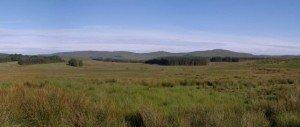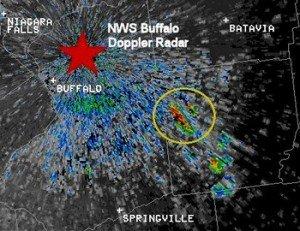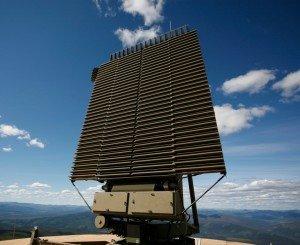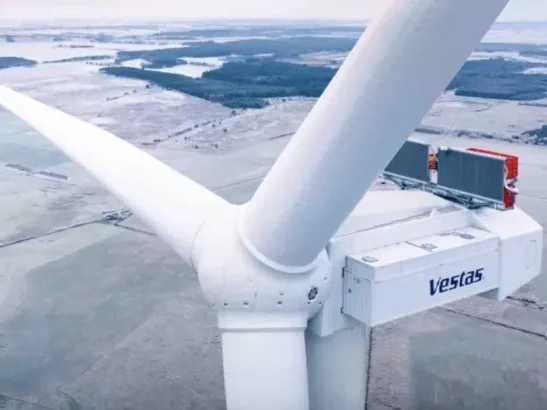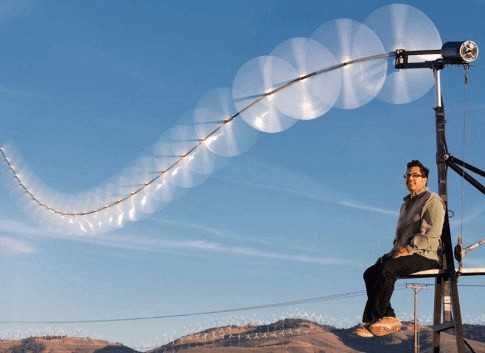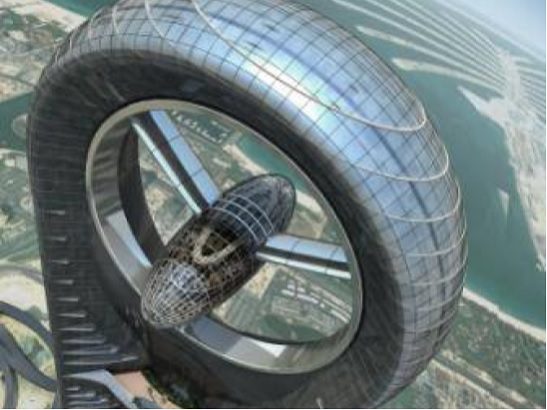The development and installation of wind farms, particularly in the United States, has not progressed as quickly as it might have due to concerns about the effect of wind turbines on radar.
Spinning wind turbine blades create a “cone of silence” above the turbines, making it difficult for 2-D radar systems to see aircraft as they fly overhead. It can also create false positives on radar that can look like weather systems (see photo above). According to the Idaho National Laboratory speaking, close to 10,000 MW of wind power has been held up or abandoned completely because of radar system concerns raised by the US Federal Aviation Authority, Department of Defence or the Department of Homeland Security.
However, it seems that this type of problem can be overcome. In the United Kingdom, Raytheon was recently awarded a contract by the British National Air Traffic Services (NATS) to develop “clutter erasure” algorithms whereby radar can differentiate between a spinning turbine and an airplane. The company completed a feasibility study in which they determined five methods that could now or with future radar systems eliminate the turbine-generated noise. Once the project is completed in the U.K., there are plans to deploy the technology in the Netherlands. In early 2011, the U.S. government awarded a program to build a radar/wind turbine analysis tool. This tool will allow developers to predict the impact of a wind farm on a radar system before construction, thus allowing rearrangement of the turbines or even the entire wind farm to avoid negative impacts on the radar system.
One of these methods, called concurrent beam processing increased the chances of detection of an aircraft by more than 16% in tests at the Altamont Pass wind farm in California. Dual beam radar systems alternate between a lower-angle and higher-angle radar signal, but by processing the two beams at the same time a higher degree of accuracy was achieved.
Ironically radar may be able to work towards a solution to another regular complaint about wind farms; their potential for bird and bat deaths. In order to track bird populations especially around offshore wind farms where simply counting is difficult, the use of radar has been proposed; but radar, of course, doesn’t do so great around the turbines. A paper by researchers with the radar systems developer DeTect outlined a wide array of problems radar tracking of birds will face in offshore locations and a major one is “turbine shadow,” or the turbine’s own radar reflectivity hiding the birds the radar is meant to track. One of the proposed solutions for such a problem is similar to one of Raytheon’s methods: the use of tracking algorithms. This would allow birds that entered a turbine’s “blackout zone” to be tracked until they left the zone.
A mobile radar system, the Lockheed Martin TPS-77 (photo above), has shown in recent tests that it can distinguish between aircraft and wind turbines and more than 170 TPS-77 radars are in use around the world. In Britain, the Lockheed Martin TPS-77 will be delivered and installed in November 2011 at Trimingham in Norfolk, removing military objections to a series of offshore wind farms in the North Sea. A second TPS-77 is to be installed in the Scottish Borders, overcoming objections to a 48-turbine wind farm there.
But it’s not all goodness and light. There were claims last month by the Industrial Wind Action Group that the military had not been honest about the effect wind turbine technology has on US national radar systems. This may sound borderline conspiracy theory, but an article claimed that Military radar experts in the field know the damage that’s been done. But with the debate surrounding energy policy dominated by politics and money, the military has bowed to the pressure and kept silent.
The article claims as fact that US air space has been made less safe by turbines and consequently there’s been a diminution of US national security compromised because of a reckless policy of siting wind towers within 50-miles of radar installations. However it must be recognised that the IWA Group is a pressure group and openly states that they were formed to counteract the misleading information promulgated by the wind energy industry and various environmental groups.
The Scottish government has confirmed this year that they are not now so concerned about this issue. Two planned wind farm projects which initially caused concerns about their potential effect on radar systems, can now move ahead. They have been approved by the Scottish government.
They will see 23 turbines built at Blackcraig in the Galloway hills and an extension of the same size at Black Law in North Lanarkshire and West Lothian.
